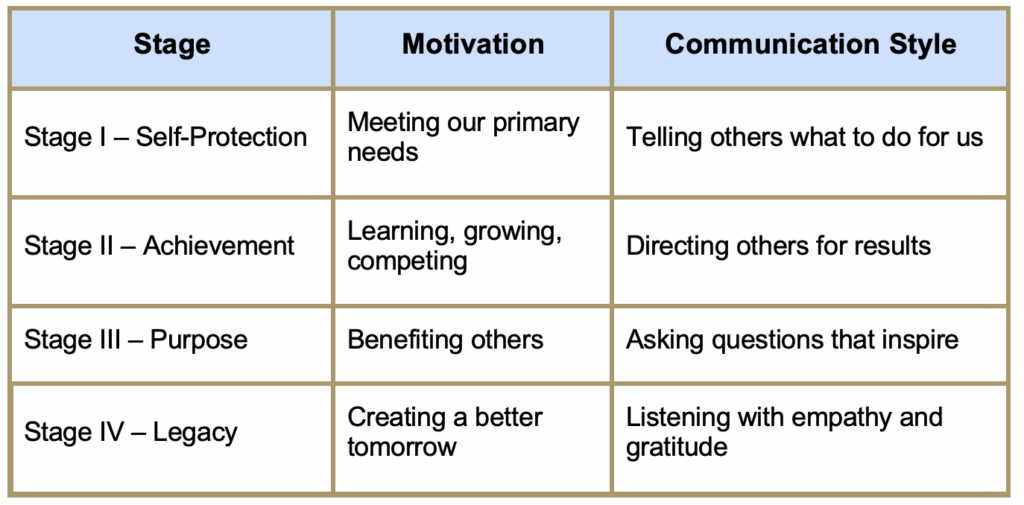From Transactional to Transformative Communication

We’ve all been in conversations where the goal is to get something done. They are efficient, focused, and meant to be transactional. We engage in this type of interaction when there’s little to learn to do better next time.
However, some conversations make us think about what we are doing and why, and they feel different. They spark curiosity, build understanding, and encourage reflection. We are growing and transforming. The difference between the two is the introspection and inspiration that occurs within us and our conversation partners.
Transactional Communication: The Efficiency of Exchange
Transactional communication plays a crucial role in our endeavors. It is the language of coordination, delivering the right information to the right person at the right time. It’s how airlines take off on schedule, hospitals move patients safely through care, and teams execute plays as planned.
The transactional approach stresses clarity, process, and completion. The underlying message is: “If you do X, you’ll get Y.” Too often, this becomes the default because it feels productive and delivers short-term results. But we are not growing or improving; we become robotic.
Transactional communication meets our brain’s basic needs for safety, predictability, and security. It keeps us productive, but it doesn’t help us grow. Over time, the team complies but doesn’t become committed.
Transformational Communication: The Courage to Connect
Transformational communication starts with curiosity. It is a language full of possibilities built on trust, respect, and a shared purpose.
When a leader communicates transformationally, the focus shifts from telling to inviting, from directing to discovering. The question becomes, “How can this situation help us grow?”
A transformational communicator:
- Asks questions that encourage awareness and promote reflection.
- Listens to understand instead of to reply.
- Links the challenge to a shared purpose that motivates.
Science confirms what we naturally sense: When we feel heard and appreciated, our brains release oxytocin and serotonin—the hormones that foster trust and happiness. Creativity increases. Collaboration gets stronger. We become more open to growing.
From Telling to Asking
When we tell, we control. When we ask, we invite. When we listen deeply, we affirm someone’s worth.
This shift from transactional to transformational communication mirrors the journey through the Four Stages of Fulfillment framework we have developed over our years working with teams:

A Tale of Two Conversations
Imagine two leaders confronting the same issue—a missed deadline.
Leader A (transactional): “Why wasn’t this done? You need to get it to me by noon tomorrow.” The task will probably be finished, but neither the leader or the team member will have gained any new insight.
Leader B (transformational): “Can you help me understand what might be holding you up? What can we learn from this?” This leader encourages ownership through reflection and shared problem-solving. The work gets completed, and the team member becomes stronger.
Transformation starts when curiosity replaces telling.
Why It Matters
Leaders shape culture through every conversation. When communication is transactional, it promotes compliance. When it is transformational, it encourages growth and commitment.
Transactional systems are efficient. Transformational systems become resilient. We need both, and great organizations balance them.
When we communicate by valuing another’s desire to do the right thing, we create environments where people thrive—not just perform.
Try This in Your Next Conversation
Pause before responding.
- Ask, “What’s your goal? What are you seeking to accomplish?”
- Replace “You need to . . .” with “What solutions have you thought of?”
- End with the affirmation: “If that sounds like the best solution, let’s give it a try.”
Transformation starts with small, intentional moments of communication—moments that say, “You matter. We’re in this together.”
Closing Reflection
We have a choice: Is this transactional, or is there an opportunity to be transformative? Transactional communication gets things done. Transformational communication fosters learning, helping people build a foundation for future decision-making when no one is there to tell them what to do.
Transformation begins not by telling, but by challenging others to think, reflect, and grow.






